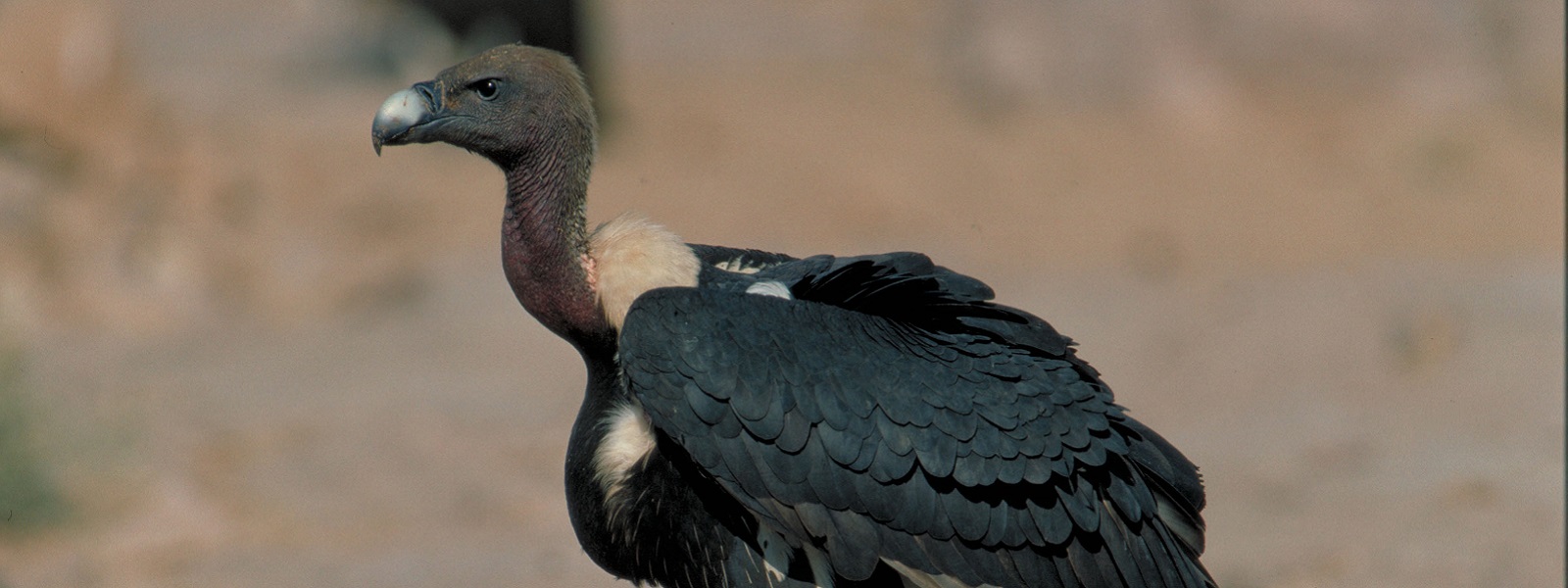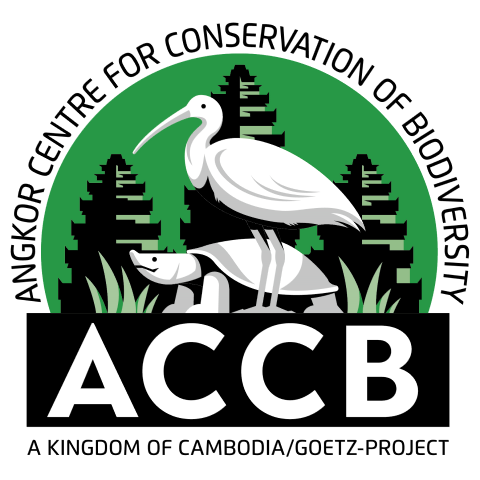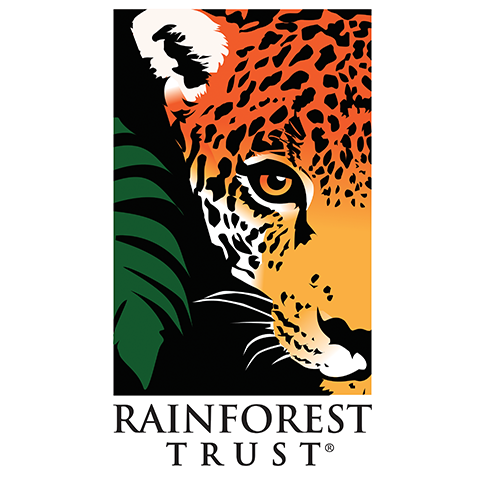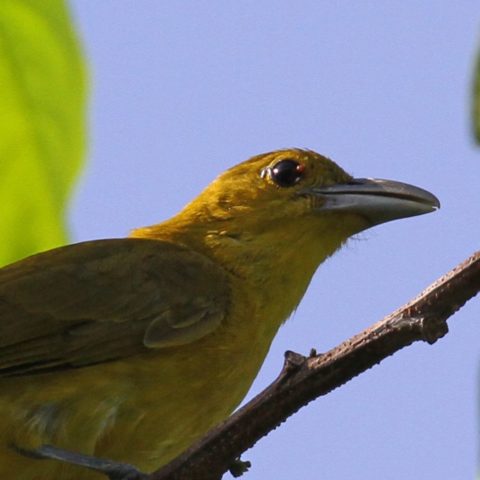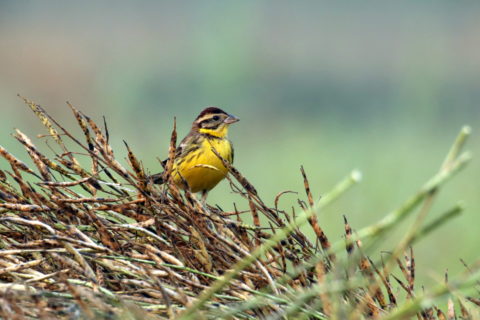Conservation Actions
Conservation Actions UnderwayCITES Appendix II, CMS Appendices I & II, Raptors MOU Category 3. It has been reported from many protected areas across its range. The governments of India, Nepal and Pakistan passed legislation in 2006 banning the veterinary use of diclofenac, and Bangladesh followed suit in 2010. A letter from the Drug Controller General of India warned more than 70 drugs firms not to sell the veterinary form of diclofenac, and to mark human diclofenac containers 'not for veterinary use' (BirdLife International 2008). These bans have led to a reduction of diclofenac within ungulate carcasses (the principal food source for vultures) in India (Cuthbert et al. 2011a ) and a study of 11 administrative districts in Nepal found diclofenac use dropped by 90% since 2006 following the introduction of measures to reduce its use (Anon 2008). The availability of diclofenac in veterinary drug stores in Bangladesh decreased from 100% in 2008-2009 to 53% in 2011-2012 (Khan 2013). However, levels of diclofenac contamination still remain high and human forms of the drug are still sold for veterinary use (Cuthbert et al. 2011a,b). In response to the misuse of human diclofenac, the Government of India banned the manufacture of all diclofenac products in vial sizes larger than 3 ml (the single dose for humans) in 2015, and this is predicted to make the drug too expensive and too complicated to use on large-bodied animals and thereby stop its misuse in livestock (T. Galligan in litt. 2016). Efforts to replace diclofenac with a suitable alternative are on-going and are showing signs of success with evidence for a decrease in diclofenac and an increase in the safe alternative (Cuthbert et al. 2011c ). An alternative drug, meloxicam, which is out of patent and manufactured in Asia has been tested on Gyps vultures with no ill-effects (Swan et al. 2006a, Swarup et al. 2007); though three additional drugs, aceclofenac, nimesulide and ketoprofen, are known to be toxic to vultures, and approximately another 10 drugs need to be tested (Galligan 2013, Cuthbert et al. 2016).
SAVE (Saving Asia's Vultures from Extinction) has developed the concept of Vulture Safe Zones; areas (with a minimum of 100 km radius, equating to 30,000 km2) around important vulture breeding colonies, where education and advocacy efforts are focussed on eliminating the use of diclofenac and other vulture-toxic drugs, such as ketoprofen (banned in Coimbatore, Erode and Nilgiris Districts [Venkitachalam and Senthilnathan 2016]) (Galligan 2013, Mukherjee et al. 2014). There are currently multiple Vulture Safe Zones being established in India, Nepal, Pakistan and Bangladesh (Mukherjee et al. 2014, SAVE 2015). These areas will provide a safe environment into which birds bred in captivity can be released (Bowden et al. 2012), as well as supporting wild birds (R. Cuthbert in litt. 2016). They can also bring in vulture-related income for locals, through ecotourism (T. Galligan in litt. 2016).
Vulture restaurants are increasingly used as ecotourism attractions in parts of the species's range, particularly Cambodia and Nepal, to raise awareness and fund supplementary feeding programmes and research (e.g. Masphal and Vorsak 2007, A. Rahmani in litt. 2016). The exchange of diclofenac with meloxicam near breeding colonies is taking place in Nepal in combination with diversionary feeding with diclofenac-free carcasses (Chaudhary et al. 2010). Diversionary feeding has been shown to reduce but not eliminate vulture mortality from diclofenac poisoning, and uncertainty over the movements of Asian Gyps vultures makes the effectiveness of measures such as these uncertain (Pain et al. 2008). Surveys utilising vulture restaurants were carried out in Myanmar in late 2006 and early 2007, simultaneously censusing nesting colonies, vulture deaths and looking for diclofenac use (Eames 2007a). Birds have been satellite tagged in various parts of their range to improve understanding of their movements, foraging range, site fidelity etc., and to aid the development of suitable conservation strategies for the species (Ellis 2004). Socioeconomic surveys in Nepal have shown that local people are strongly in favour of vulture conservation because of the associated ecological services that vultures provide (Gautam and Baral 2003).
The Report of the International South Asian Vulture Recovery Plan Workshop in 2004 gave a comprehensive list of recommendations including establishing a minimum of three captive breeding centres, each capable of holding 25 pairs (Bombay Natural History Society 2004). Captive breeding efforts are on-going and met with success when two chicks hatched in early 2007 at a breeding centre in Pinjore, Haryana (V. Prakash in litt. 2007, Bowden 2009). Three more birds hatched in 2009 (Bowden 2009). The centre is part of a captive breeding programme established by the RSPB and Bombay Natural History Society. A website has been set up to allow researchers to contribute data on known colonies to identify founder individuals for captive flocks that will ensure the full geographical spread of the species is represented in captive breeding efforts (M. Gilbert in litt. 2004). By April 2008, there were 88 in captivity at three breeding centres in India, as well as 11 at a centre established by WWF-Pakistan and 14 in captivity in Nepal (Pain et al. 2008). During 2009, these numbers increased to 120 in India, 43 in Nepal and 14 in Pakistan (Bowden 2009). In late 2009, trials of artificial incubation methods were due to start soon (Bowden 2009). By November 2015, the total number held in breeding centres affiliated to SAVE (Saving Asia's Vultures from Extinction) stood at 218 birds at 3 centres in India, 15 at a centre in Pakistan and 57 at a centre in Nepal (SAVE 2015), of which 20 juveniles had successfully fledged (Bowden et al. 2012); and as of 2015 the Indian breeding centres were fledging 60 juveniles of all three resident Gyps species combined (V. Prakash pers. comm. per. C. Bowden in litt. 2016). Six captive-reared birds were released in Nepal in 2017, followed by the first 8 captive-bred individuals and a further 4 captive-reared birds in September 2018 (SAVE 2018). Captive breeding centres often receive vultures that have been found poisoned and then rehabilitated by rescue centres such as the Centre for Wildlife Rehabilitation and Conservation, Assam, which is run by the International Fund for Animal Welfare (IFAW), the Wildlife Trust of India and the Assam Forest Department (Wildlife Trust of India 2019).
The species is covered by a Multi-species Action Plan (MsAP) for the conservation of African-Eurasian vultures (Botha et al. 2017). An updated action plan for vulture conservation in India was written in 2020 (MoEFCC 2020). Cambodia and Nepal have updated their 10-year (2016-2025) (Sum and Loveridge 2016) and 6-year (2014-2019) action plans (DNPWC 2015), and in 2016 an action plan was produced for Bangladesh. In 2012 the governments of India, Pakistan, Nepal and Bangladesh adopted a number of priority actions for the conservation of vultures, proposed by SAVE. These include banning large multi-dose vials of human diclofenac, testing other NSAIDs for toxicity to vultures and expanding the Vulture Safe Zones initiative (Galligan 2013). In 2014, SAVE produced A Blueprint for the recovery of South Asia’s Critically Endangered Gyps vultures that presents key conservation actions for the region and timelines for each action (SAVE 2014).
Conservation Actions Proposed
Continue to measure the frequency of diclofenac and ketoprofen-treated carcasses available to vultures. Support the ban on the veterinary use of diclofenac, and support species management or restoration, as needed. Strengthen public awareness and public support programmes, including providing veterinary camps and livestock management training (SAVE 2014). Monitor remaining populations, in particular continue activities in Cambodia and Myanmar. Monitor the sale of veterinary drugs, and contamination of ungulate carcasses/dead vultures (SAVE 2014). Provide supplementary food sources, with appropriately-sized carcasses, where necessary for food-limited populations (see Hille et al. 2016). Support captive breeding efforts at a number of separate centres with the aim of holding at least 150 pairs of each species in captivity (Johnson et al. 2008, Pain et al. 2008). Manage genetic stock in the captive-bred population (Bowden et al. 2012). Promote the immediate adoption of meloxicam as an alternative to diclofenac, and improve its availability (SAVE 2015). Test other non-steroidal anti-inflammatory drugs to identify additional safe alternative drugs to diclofenac and also other toxic ones. Four additional drugs, aceclofenac, nimesulide, flunixin and ketoprofen, are known to be toxic to vultures, and approximately another 10 drugs need to be tested (Galligan 2013, Cuthbert et al. 2016), and support bans for these vulture-toxic drugs. Attempt to fully implement a restriction in the size of diclofenac vials sold for human use to make them less practical to use for veterinary purposes and take action against companies that fail to comply with the diclofenac ban (Cuthbert et al. 2011, SAVE 2014). Promote Vulture Safe Zones, with expansion to include trans-boundary efforts as well as the opportunity for vulture-based ecotourism (SAVE 2014, 2015). Safeguard nesting areas from logging (SAVE 2014). Estimate the potential value of ecosystem services provided by vultures (SAVE 2014).
Action Plan
Blueprint for CR Asian Gyps Vultures - SAVE 2014-2
Location Information
Gyps bengalensis occurs in Pakistan, India, Bangladesh, Nepal, Bhutan, Myanmar, Thailand, Laos, Cambodia and southern Viet Nam, and may be extinct in southern China and Malaysia (BirdLife International 2001). It has been recorded from south-east Afghanistan and Iran where its status is currently unknown. As recently as 1985 the species was described as "possibly the most abundant large bird of prey in the world" (Houston 1985). However, it disappeared from most of South-East Asia in the early 20th century and the only viable populations in the region are found in Myanmar and Cambodia, mainly in the north (both probably in the low hundreds of individuals) (Hla 2003, Anon 2003, 2005, Eames 2007a,b, Hance 2009). Given the lack of intensive agriculture and associated chemical use in South-East Asia and the continued presence of large areas of suitable habitat for the species, the primary reason behind its decline in this part of its range is thought to be the demise of large ungulate populations and improvements in animal husbandry resulting in a lack of available carcasses for vultures (Anon 2003, 2005), as well as the impact of poisoning events as an accidental consequence of local hunting and fishing practises (Clements et al. 2013).Since the mid-1990s, it has suffered a catastrophic decline (over 99%) across the Indian Subcontinent (the majority of its historic range), first noticed by villagers in northern India in 1996-97 (A. Rahmani in litt. 2016), with further early evidence from Keoladeo National Park, India, and then throughout India (Prakash et al. 2003, 2007), Pakistan (Gilbert et al. 2006), Nepal (Baral et al. 2005, Chaudhary et al. 2012) and Bangladesh (Khan 2013), to the point that the species is highly threatened with extinction. Extensive research has identified the non-steroidal anti-inflammatory drug (NSAID), diclofenac, to be the cause behind this rapid population collapse (Green et al. 2004, Oaks et al. 2004a, Shultz et al. 2004). This drug, used to treat domestic livestock, is ingested by vultures feeding on their carcasses leading to renal failure and causing visceral gout (Oaks et al. 2004a, 2004b; Swan et al. 2006b, Gilbert et al. 2006). Declines in India between 2000 and 2007 averaged 43.9% per year (Prakash et al. 2007), and ranged between 11%-61% in Punjab province, Pakistan over the same period (Murn et al. 2008), while surveys of 23 known colonies in Punjab province in 2006 found a total of only 37 breeding pairs (Murn et al. 2008). In the lowland districts of Nepal the species declined at 14% a year between 2002 and 2011 (Chaudhary et al. 2012). In Bangladesh, the species declined by 60% between 2008-2009 and 2011-2012 (Khan 2013), and the population trend in the country is still a decline (IUCN-Bangladesh 2016). The governments of India, Nepal and Pakistan banned veterinary diclofenac in 2006 and the Government of Bangladesh followed suit in 2010 (T. Galligan in litt. 2016). Since then, the rate of decline appears to have slowed, and may even have reversed in India and Nepal (Prakash et al. 2012). Diclofenac is apparently entirely absent in Cambodia, adding greater importance to that remaining small population (minimum 201 individuals in 2010; 183 individuals in 2011 [Clements et al. 2013]). Census results from Cambodia suggest the population there may have been increasing since 2004, or is at least stable (Eames 2007b, Clements et al. 2013, S. Mahood in litt. 2012), while there may be some local increases in India (D. L. Bohra in litt. 2016). A local increase has also been noted in Pakistan, though this may be more a result of immigration (Murn et al. 2014). Surveys of vulture restaurants in Myanmar in 2006 and 2007 estimated a minimum of 62 White-rumped Vultures were present (Hla et al. 2011).
Geographic Range
Extant
Bangladesh, Bhutan, Brunei Darussalam, Cambodia, India, Myanmar, Nepal, Pakistan, Russian Federation
Possibly Extinct
Afghanistan, Iran, Islamic Republic of, Lao People's Democratic Republic, Thailand, Viet Nam
Population Information
Formerly described as possibly the most abundant large bird of prey in the world, with a global population almost certainly numbering several million individuals, this species suffered dramatic population declines during the 1990s across its range. There are now an estimated c.6,000 individuals in India (Prakash et al. 2019), <2,000 individuals in Nepal (DNPWC 2015), c.100 individuals in Cambodia (Sum and Loveridge 2016), c.260 individuals in Bangladesh (MoEF 2016) and 250-350 individuals in Bhutan and Pakistan (Botha et al. 2017). The total population is therefore estimated to be c. 6,000-9,000 individuals, equating to 4,000-6,000 mature individuals.Threats
By mid-2000, Gyps vultures were being found dead and dying in Nepal, Pakistan, Bangladesh and throughout India, and major declines and local extirpations were being reported (Prakash et al. 2003, 2007, Gilbert et al. 2006). The non-steroidal anti-inflammatory drug (NSAID) diclofenac, used to treat domestic livestock, has been identified as the cause of mortality. Vultures are exposed to diclofenac and other NSAIDs through scavenging on the carcasses of largely cattle and buffalo that had been treated prior to death (often as part of palliative care) and left for scavengers to consume. Vultures are unable to process diclofenac and other vulture-toxic NSAIDs which then cause renal failure resulting in visceral gout in the vast majority of examined vultures (Oaks et al. 2004a, Shultz et al. 2004, Green et al. 2004, Swan et al. 2006b, Gilbert et al. 2006, Cuthbert et al. 2014). Modelling has shown that to cause the observed rate of decline in Gyps vultures, just one in 760 livestock carcasses need contain diclofenac residues (Green et al. 2004); and sampling carcasses of livestock in India between 2004 and 2005 showed that 10% were contaminated with diclofenac (Taggart et al. 2009). Despite awareness programmes to educate locals about the association between diclofenac and vulture mortality and diclofenac being banned in several range states, a survey in Nepal indicated that the vast majority of people still do not link diclofenac use to a decline in vulture populations (Paudel 2008), potentially leading to a slower uptake of meloxicam, an alternative veterinary drug that is of low toxicity to vultures and which has been promoted as a safe alternative to diclofenac in the region (Swan et al. 2006a, Swarup et al. 2007). Additionally, large vials of diclofenac continue to be manufactured for human use, which are then distributed, sold and used for veterinary purposes (Cuthbert et al. 2011, T. Galligan in litt. 2016). A second veterinary drug in use in India and particularly in Bangladesh, ketoprofen, has also been identified to be lethal to the species, and measurements of residue levels in ungulate carcasses in India indicates that they are present in sufficient concentrations to cause vulture mortalities (Naidoo et al. 2010). Additionally, aceclofenac is a pro-drug of diclofenac, which is converted to diclofenac in cattle (Galligan et al. 2016), and is therefore as toxic to vultures as diclofenac itself. Wild vultures have also been found dead in India with visceral gout and residues of the veterinary NSAID nimesulide in their tissues (Cuthbert et al. 2016; Nambirajan et al. in prep. 2021). This combination has only been found previously for gout and diclofenac, and therefore provides a strong indication that nimesulide is also toxic to vultures (C. Bowden in litt. 2016). The availability of other NSAIDs, including ketoprofen and nimesulide, is increasing (Cuthbert et al. 2011b, Khan 2013, C. Bowden in litt. 2016). Flunixin is another NSAID that has been associated with visceral gout in vultures (Zorrilla et al. 2015), though it is not commonly in use in South Asia yet (T. Galligan in litt. 2016). One study recorded that the sex of fledglings, the sex of dead adults and the sex of adults with visceral gout were all male-biased which may lead to problems in the future (Arshad et al. 2009).Other likely contributory factors in South Asia are changes in human consumption and processing of dead livestock (which have occurred in response to the collapse in vulture numbers) and poison and pesticide use, but these are probably of more minor significance (C. Bowden in litt. 2016). In Bangladesh, 61% of cattle owners surveyed said that they now buried dead cattle or used them as food in shrimp farms, which could lead to a reduction in food supply for vultures (Khan 2013). Forest fires may also be a threat in some areas, for instance in the Himalayas, though this may need further study (M. Thakur in litt. 2016). Deforestation, electrocution and collision with energy infrastructure may pose additional threats in some parts of the range (Botha et al. 2017).
In South-East Asia, the near-total disappearance of the species pre-dated the present crisis, and probably resulted from the collapse of large wild ungulate populations and improved management of deceased livestock reducing food availability (Clements et al. 2013). In Cambodia, vultures are still threatened by extremely low population densities of wild ungulates, a decline in the number of free-ranging domestic ungulates, felling of nesting trees for timber and accidental poisoning at carcasses laced with pesticides to kill stray dogs and for hunting wildlife (Loveridge et al. 2019; Clements et al. 2013; S. Mahood in litt. 2012). Loveridge et al (2019) recorded 15 vulture poisoning events in Cambodia during 2005-2016, resulting in the known deaths of 32 White-rumped Vultures. The same study also recorded the first confirmed vulture mortality from carbofuran in Cambodia. Additional threats identified in Myanmar include direct persecution of the species through nest destruction, hunting and poisoning and indirectly through a loss of food supply (Hla et al. 2011).
Partners
IUCN Red List Account Link
Please click here to see the species' IUCN Red List Account page.Photo Credits
Goran Ekstrom (category and featured image)

